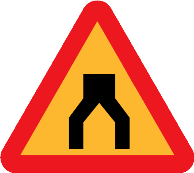3 Signs Your Business Needs What UiPath Process Automation Can Do
Share at:

One of the most rewarding aspects of providing an emerging technology is that customers who contact us rarely question whether they need the benefits of robotic process automation (RPA). Instead, their focus is on whether our RPA products and solutions can deliver what we say it can. Initial contacts usually lead to trials and demos – which then lead to productive discussions on the best combination of solutions, budgets and implementation steps.
We’ve learned that companies seeking out our emerging technology are looking for solutions whose upsides more than justify the risks always associated with innovation and early adoption. We’ve found solving business needs with our workflow optimization products not only cure process pain points and save our customers money, but also give them several significant competitive advantages:
High and best use of talent: Eliminating repetitive tasks doesn’t just speed things up and improves quality. It also means our customers can use their employee’s expertise in much more meaningful ways.
Better Decision-Making: rapid and accurate data management is a major focus of UiPath solutions – which means company analytics are more robust and accurate.
Time-to-Market: our solutions can link activities across multiple systems, which means high volume processes that took weeks can be done in days. For example, the migration of purchased books of insurance business.
Still, first customer conversations are almost always focused on pain points and inefficiencies. It’s only after they’ve seen how process automation solutions can impact their organization that the longer range competitive edges our solutions provide get their attention.
What are those pain points that lead our customers to seek our emerging RPA technology? More importantly, how familiar are you with those pain points in your own company?
3 Signs You Need What We Can Do
Significant Process Bottlenecks. Process bottlenecks are activity disruption points that come in two varieties: upstream process

bottlenecks, a situation where related upstream activities are forced to wait until the impaired activity becomes available; downstream bottlenecks, where a dependent activity must wait until required input from the congested activity is released.
For the purpose of this discussion, significant process bottlenecks are defined as consistent or regular seasonal disruptions that cause one or more of the following:
Direct costs. An example would be a balky accounts payable process that consistently results in missed early payment discounts.
Indirect costs. Such as poor customer relationships caused by slow claims processing and remittances.
Organization costs. For instance, poor morale created by constant overtime demands to meet mandatory process deadlines like monthly financial statements.
Bottlenecks are Self-Evident. If the three costs outlined above are viewed as “smoke”, a bottleneck(s) would be considered the “fire”. In some cases, new clients have identified significant bottlenecks because their workflow systems have report functions to highlight such issues. Less frequently, clients have invested in process re-engineering exercises. For the most part, though, many bottlenecks are sufficiently self-evident to be found simply by asking employees what’s holding up their work.
This doesn’t mean digging into processes won’t uncover more improvement opportunities, but we find new clients often start by just picking the proverbial low-hanging fruit.
Process Redesign Alone won’t Suffice. It’s rare for bottlenecks not to be symptomatic of poor process design. In some cases, poor processes result from evolution over time, where incremental changes are rarely planned, documented or executed. Conversely, static processes, unresponsive to new or modified requirements, can default into poor design.
The initial bottleneck redesign focus typically asks these qualifying questions.
Is the bottleneck really one activity – or is it an aggregation of two or more activities?
If one activity, can it be positioned to run parallel with other activities?
If several activities, can they be positioned to run in parallel?
Can any of the activities be automated?
Is the activity rules-based, not dependent upon human judgement?
Is it a high volume activity?
Does the activity rely on actions in several systems?
If automation isn’t feasible, are additional resources available?
Our clients often find that extinguishing one bottleneck puts the spotlight on a new one – and so forth, until the overall process is slowly transformed. They also find our robotic process automation solutions are as diverse enough to keep up with ongoing solution requirements.
Clients solution requirements may start with Web Automation (Automated web login, navigation, button & link clicks and form filling), shift to Pattern Based Data Management (extraction of tabular and pattern-based data across multiple web pages) and move to Screen-Scraping and Data Extraction across running applications. In almost any instance, our technology capabilities make us a partner for the long haul.

Strategic Advisor, Tquila Automation
Get articles from automation experts in your inbox
SubscribeGet articles from automation experts in your inbox
Sign up today and we'll email you the newest articles every week.
Thank you for subscribing!
Thank you for subscribing! Each week, we'll send the best automation blog posts straight to your inbox.



